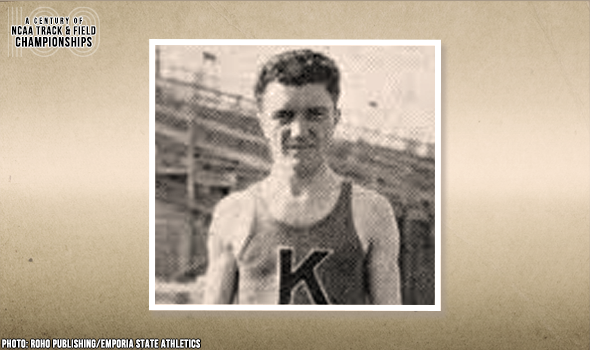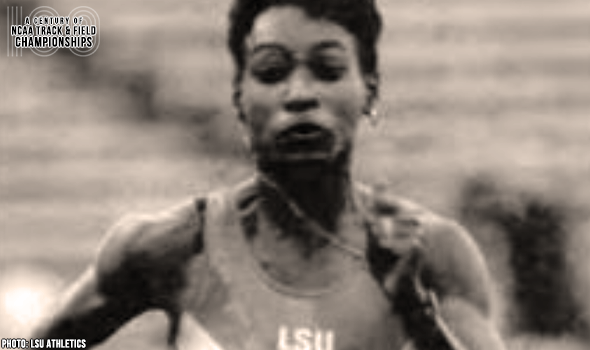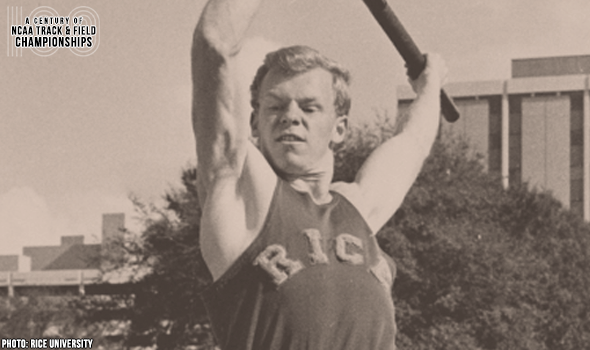
Scott One-Upped Himself In 1978
Steve Scott had no chance to win a fourth-straight NCAA Division II 1500-meter title in 1978.
That’s because UC Irvine had moved up to Division I.
However, Scott had already shown he was more than ready for the challenge in 1977, when he finished as runner-up at the NCAA Division I meet a week after becoming the first NCAA DII athlete to complete the 800-1500 double.
In fact, Scott entered the 1978 NCAA DI final at Hayward Field as one of the favorites, having won the 1977 AAU national title. He even had some previous success at Hayward Field, where he gave the Prefontaine Classic its first sub-4 mile in 1977 and was a surprise finalist at the 1976 U.S. Olympic Trials, finishing seventh.
But, like everyone, Scott – a native of Upland, California – knew most in the crowd would be cheering for Oregon’s Matt Centrowitz, a 1976 Olympian running his final race as a collegian at Hayward Field. “I know that nobody wants to win more than me,” Centrowitz told John Conrad of the Eugene Register-Guard before the final.
Neither Scott nor Centrowitz wanted a repeat of the 1977 race, in which Scott found himself boxed in when the finishing kicks started and Centrowitz watched from the stands after not making the final.
So, shortly after the first lap, Scott went to the lead and had his closest challenge from Centrowitz all the way until the bell lap began. Scott maintained the lead as Centrowitz was passed entering the backstretch by East Tennessee State’s Ray Flynn, who stuck with Scott until the finish as Scott won by a tenth of a second in 3:37.6.
Centrowitz, who ended up sixth, was somewhat surprised by Scott’s strategy: “I knew he was capable of running strong the whole way, but I didn’t think he’d do it. He really wanted to win it.”
Scott agreed with that observation, saying “I dreamed all week of taking a victory lap after the race.”
Interestingly, the victory by Scott didn’t make him the first Anteater to win an NCAA Division I crown, as Mauricio Bardales got that honor the night before by winning the decathlon with 8007 points.
Scott went on to become one of America’s best-ever milers, breaking Jim Ryun’s 3:51.1 American record from 1967 and becoming the first American to run sub-3:50 – his PR of 3:47.69 still rates as second-best by an American.
In 1999, Scott became a coach, starting the track & field and cross country programs at Cal State San Marcos – whose women won three NAIA national cross country titles 2009-11 (the men were runners-up in ’11) – before retiring in 2018.
The NCAA and collegiate track & field will mark a momentous milestone in the spring of 2021 -- the 100th anniversary of the NCAA Championships and with that, the NCAA Track & Field Championships. In June 1921, the University of Chicago hosted the first track & field championships in NCAA history.
This point can’t be emphasized enough: Not only was the event the first for NCAA track & field, but the first championships for any sport under the sponsorship of the NCAA.
To celebrate, over each of the next 365 days, the U.S. Track & Field and Cross Country Coaches Association (USTFCCCA) will celebrate moments, student-athletes, and coaches that have made a century’s worth of championships special. From humble beginnings to important historical milestones to the modern-day, collegiate track & field has evolved with the American society.
The 2021 edition of the NCAA Division I Outdoor Track & Field Championships begin with preliminary round action on May 27-29 in Jacksonville, Fla., and College Station, Texas. The championships final site and culmination of the celebration is slated for June 9-12, 2021 at the newly rebuilt Hayward Field in Eugene, Ore.

Clemson’s Ross Kept Getting Faster In 1995
Duane Ross PR’d twice in the 110H at the 1995 NCAA DI Outdoor T&F Championships. When Ross won in 13.32, he became the No. 3 performer in collegiate history.

Illinois’ Kerr Went Back-To-Back At NCAAs
George Kerr won back-to-back 800/880 titles at the NCAA Outdoor T&F Championships in 1959 & 1960. Kerr set a meet record of 1:46.4 in the 800 meters in 1960.

UCLA’s Baucham Bounded To TJ CR In 2005
Candice Baucham won the triple jump at the 2005 NCAA DI Outdoor T&F Championships with a collegiate record of 14.07m (46-2). Baucham took the event by more than one foot.

San Romani Went From Unknown To Legend
Archie San Romani won back-to-back 1500/mile crowns at the NCAA Outdoor T&F Championships in 1935 & 1936.

Auburn’s Glance Made Them Look Twice
Harvey Glance completed the 100-200 double as a freshman at the 1976 NCAA DI Outdoor T&F Championships. He set a meet record of 10.16 in the 100.

Nova’s Rhines Did NCAA 5K Three-Peat
Jen Rhines was the first female athlete in the history of the NCAA DI Outdoor T&F Championships to win three consecutive 5K titles.

Georgia’s Erm Cruised To 2019 Decathlon Title
Johannes Erm won the decathlon at the 2019 NCAA DI Outdoor T&F Championships by 342 points with his 8352 total. That was also the fifth-best score in meet history.

McMillen Adapted, Set 1500 MR In 1952
Bob McMillen set a meet record in the 1500 meters of 3:50.7 at the 1952 NCAA Outdoor Track & Field Championships.

LSU’s Duhaney Destroyed NCAA 200 Field In 1992
Dahlia Duhaney owns the largest margin of victory in meet history in the 200 with her 0.44-second winner at the 1992 NCAA DI Outdoor T&F Championships.

Rice’s Roberts Cooked Up Pole Vault Greatness
Dave Roberts was the second man to win three consecutive pole vault titles at the NCAA DI Outdoor T&F Championships, doing so from 1971 to 1973.

